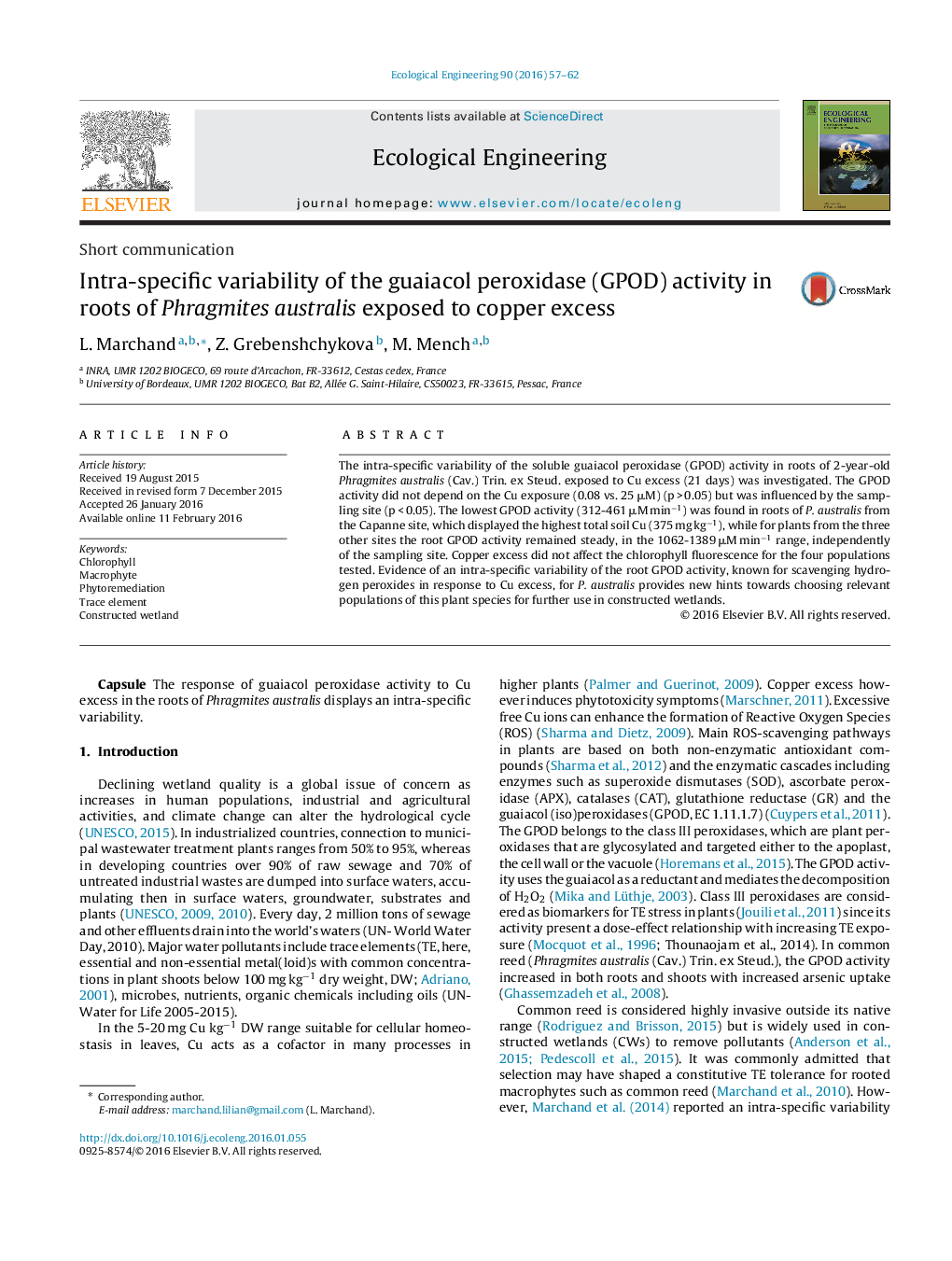| Article ID | Journal | Published Year | Pages | File Type |
|---|---|---|---|---|
| 4388645 | Ecological Engineering | 2016 | 6 Pages |
•The GPOD activity did not depend on the Cu exposure (0.08 and 25 μM) in roots of Phragmites australis.•The GPOD activity was influenced by the sampling site.•Copper excess did not affect the chlorophyll fluorescence.•The selection of common reed populations is pivotal for their use in constructed wetlands.
The intra-specific variability of the soluble guaiacol peroxidase (GPOD) activity in roots of 2-year-old Phragmites australis (Cav.) Trin. ex Steud. exposed to Cu excess (21 days) was investigated. The GPOD activity did not depend on the Cu exposure (0.08 vs. 25 μM) (p > 0.05) but was influenced by the sampling site (p < 0.05). The lowest GPOD activity (312-461 μM min−1) was found in roots of P. australis from the Capanne site, which displayed the highest total soil Cu (375 mg kg−1), while for plants from the three other sites the root GPOD activity remained steady, in the 1062-1389 μM min−1 range, independently of the sampling site. Copper excess did not affect the chlorophyll fluorescence for the four populations tested. Evidence of an intra-specific variability of the root GPOD activity, known for scavenging hydrogen peroxides in response to Cu excess, for P. australis provides new hints towards choosing relevant populations of this plant species for further use in constructed wetlands.
